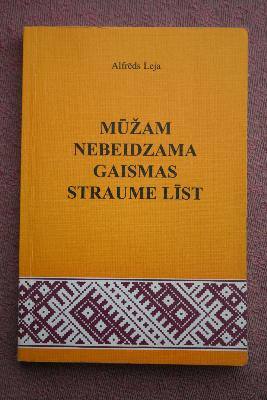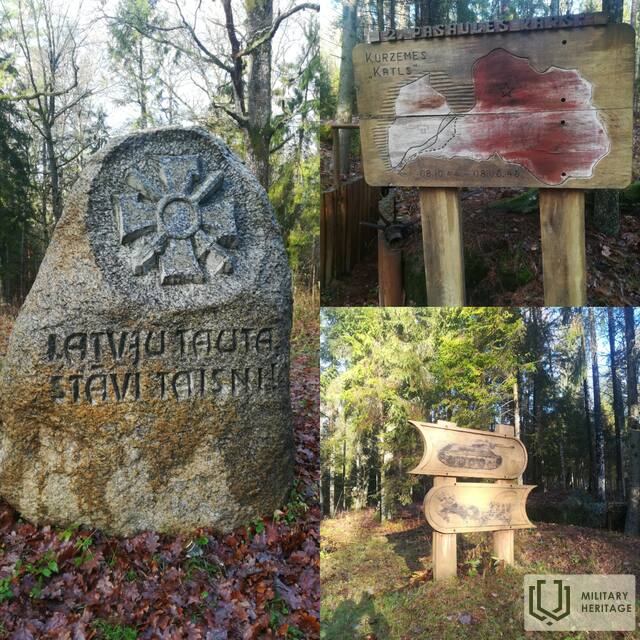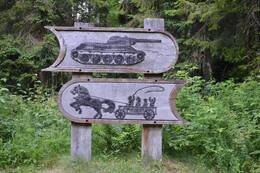Memories of Alfred Leja, a poet
Memories of the former Aivzvīgīk Alfrēdas Leja from the book "An Endless Stream of Rain Falls Forever".
Aizvīķi and its residents also suffered greatly in the mills of the superpowers of World War II.
Alfred Ley writes in his memoirs:
"The Russians entered Latvia on July 18, 1944 near Šķaune. In July-September, young men born in 1927 and 1928 were conscripted into the Air Force. This was another betrayal of the Germans against the Latvian people. Only the rapid advance of the Russians to the west essentially saved the young men of Aizvīķi, including the author of these lines, from serving in the German army.
Many of our schoolmates remained for life lying on the battlefields of foreign lands, not understanding what they sacrificed their lives for. Many disappeared in the vastness of Siberia and in the Gulag camps with the dream of the Motherland in their heads. Many still live in foreign lands, where they have planted roots too deep to uproot and return to Aizvīki, where no one is waiting for them anymore."
LEJA Alfred – educator, athlete, publicist.
Born on 24 August 1927 in Poļi, Kalētu parish. Studied at Aizvīķi incomplete secondary school, graduated from Kazdanga Agricultural Technical School (1948), and the State Institute of Physical Culture (1958).
He has written the following books: Young People, Let's Walk (1962), Oh, I Wish I Had Dāliņš's Legs (I volume 1997, II volume 2004), How Nice in Kazdanga (1999), History of the Sports Society Vārpa (1999), An Endless Stream of Light Falls for Ever (2000), Diary of a School Principal (2001), together with Andris Zankovskis Although There Is a Frost in My Hair (2002), Once There Was Aizvīķi Parish (2004), What a Heaven in Kurzeme (2007), Kazdanga Park and Its God (2008), With Flaming Hearts (2009), Aizpute Sports (2009). He has participated in the preparation of the book Creative Work (1967 in Moscow), as well as the publication of the History of Latvian Sports (1994), and the History of Latvian Olympics (2003).
Awards: International Luda Bērziņš Prize (2001, 2003, 2005, 2007, 2009), USSR Physical Culture Meritorious Person (1957), All-Union Agricultural Exhibition Gold Medal (1955, 1957), Latvian SSR Meritorious Coach (1962), Agricultural Meritorious Person (1963), People's Education Meritorious Person (1989), Golden Badge of Honor of the Order of Three Stars (1996), Latvian Sports Veterans Union Badge of Honor (1997), Latvian Sports Administration Badge of Honor (1998), Latvian Olympic Committee Badge of Honor (2003), Latvian State Defense Fund Lāčplēsis Cavalier Badge of Honor (2003), Fatherland Prize laureate, world record holder Jānis Daliņš 100th Anniversary Table Medal (2004), Latvian Sports Veterans Union Bronze Medal Medal of Sports Glory (2005) and silver medal (2007). Kazdanga parish award Honorary Treasurer (2005).
Included in the brochure "Let Everyone Sow in the Land as Much as Possible" (1990) published by the Teaching Methodological Cabinet of the State Agro-Industrial Committee of the Latvian SSR and in the list of 24 Latvian educators recognized in a competition organized by the Swedish History Museum - an international project "Biographies of Teachers in the Countries Around the Baltic Sea", published in Swedish, Finnish, Estonian, Latvian. Awarded a state scholarship for lifetime contribution to the development of Latvian sports.
http://vardnica.aizpute.lv/23-personas-l/351-leja-alfreds
Related timeline
Related objects
Testimonies of World War II in Aizvīķi Park
Aizvīķi Manor Park is located in Aizvīķi, Gramzda Parish, just a few kilometers from the Lithuanian border.
In Aizvīķi Park, the sites of bunkers and trenches from World War II are still clearly visible. One of the types of weapons was the rocket launcher system "Katyusha". Several such rocket launcher systems were located in Aizvīķi Park, even after the end of World War II, and these sites (caponiers) are clearly visible in nature.
This unique forest park, shrouded in secrets and legends, was created in the late 19th century as the Aizvīķi Manor Park, when the manor's baron von Korf planted the nearby hilly land with a pine and spruce forest. Later, walking paths were laid out in the 40-hectare area, other species of trees were also planted, and a pheasant garden was established.
In addition to the picturesque forest landscapes, there are also wooden fairy tale and legend characters, as well as stone sculptures that tell travelers events from the history of Aizvīķi and mark the cultural and historical sites in the park. The park also has a Green Class.
To better explore the cultural and historical heritage of Aizvīķi Manor Park, we recommend using the services of a guide.







